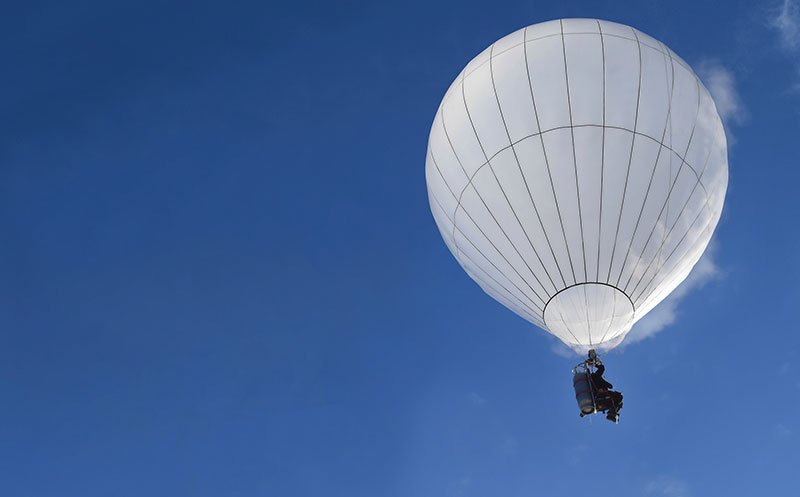Alumna takes her math skills to the skies as a competitive hot air balloonist
Some families go camping, some go fishing. Kim Magee’s (B.S. ’13) family went flying.
Magee’s parents were both commercial balloon pilots, and she took the first of many family hot air balloon rides at age 7. When she left her hometown of St. Louis for UMKC, she realized how much she missed ballooning and decided to get her own license. Today, she’s a competitive hot air balloonist, holding multiple national and world records.
Magee finished her degree in mathematics and statistics at UMKC before going to the University of Iowa to earn her master’s degree in biostatistics, eventually taking a position as a biostatistician at the university. Around the same time, through connections from her dad’s balloon repair shop, she met her husband, Adam. Now they support each other as they compete at the highest levels of ballooning and train the next generation of pilots at their business, The Balloon Training Academy. The program, based in Iowa, offers online, self-paced education, as well as in-person training via a network of volunteer instructors.
How many ballooning records do you have?
I currently have six world records and nine national records in distance and duration, with some single flights breaking multiple records.
How do you train for something like that? Did your math degrees come into play?
There was a lot of prep work: getting equipment ready, calculating lift, fuel capacity, etc. My first attempt to break a record was unsuccessful, but I learned a lot from the experience. For my second attempt, I adjusted the size of my balloon and found multiple ways — like finding lighter clothing and gear and going on a strict diet — to reduce the overall weight so I could conserve fuel and stay in flight longer.
There was also a lot of prep work around weather and flight planning. I endlessly pored over spreadsheets of lift calculations, factoring in the weights, fuel, forecasted temperature and altitude. There is a lot of math involved in ascents, descents, angles, etc. to maneuver the sky. I even had a dedicated meteorologist with whom I would talk about location shifts, wind speeds, temperature, winds aloft, clouds, dew points — you name it, we were looking at it.
Is there a reason you attempt these flights in winter?
The colder it is, the less fuel you burn. So my first record-breaking flight was on a crisp North Dakota January morning with a 2-degree high. We guessed the temperature was somewhere between 40 and 50 below zero at the altitude I was cruising. I was at 10,000+ feet for two
hours with my experimental balloon and a propane tank strapped to my back. It’s a fine balance between how warm you want to be versus how much fuel you want to use.
Now that you and your husband have opened The Balloon Training Academy, what do you hope to accomplish through it?
Like all of aviation, the sport of ballooning has struggled to attract new, young pilots. With The Balloon Training Academy, we hope to make hot air balloon education and training accessible and economical. So far it’s been successful — we’ve helped train approximately 40% of all new hot air balloon pilots. We want to see the number of balloon pilots increase for many years
to come.

